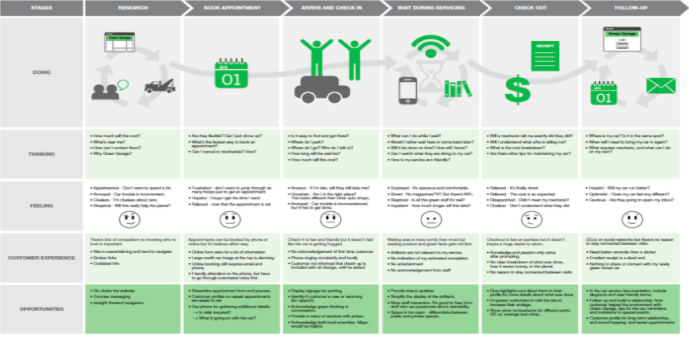Have you ever had an unforgettable experience… that was bad? I remember traveling with my young boys. It was 3a.m. and I was pushing my infant son in the stroller and pulling my half-sleep 3-year-old through a smoke hazed Las Vegas airport.
I was looking for an area to sit for our three-hour layover in route to our final destination, which was another 5 hours away. There was nowhere to wait without my children inhaling second hand smoke and that would at least give me some peace of mind.
It was evident that the airline I chose had never given any thought to the traveling wearied mother persona, or the thousands of other parents who had to brave (yes, it takes guts) traveling with young children, or they just didn’t care about my personal experience.
According to Segment’s 2017 Personalization Report, on average 71% of consumers are frustrated with an impersonal experience and 44% said that they will more than likely become repeat buyers after a personalized experience with a well-known brand.
Of course, it’s unrealistic to expect the needs of every individual to be met, but mapping out customer journeys allows companies to create experiences that will serve the personal needs of different personas yet make them feel equally special.
We’ll look at the definition of a customer journey map, the importance of mapping based on your customer personas, and by the end of this you’ll know how to create a map with a customer centric approach that naturally uses, not products or services, but experiences that motivate customers to buy more and be loyal.
What’s a Customer Journey Map
A customer journey map is a visual aid identifying every interaction a customer has from the moment a need arises to beyond it being fulfilled.
It provides an overall understanding of customer pain points, efforts, inquiries, concerns, expectations and other valuable insights on the customer experience.
Keep in mind that the experience is everything that is perceived, felt and remembered by a customer, while also being empathetic to his reality and needs before, during and after the purchase.
Gartner’s market guide states that understanding the customer journey is critical to enhancing customer experiences and operational efficiency.
Think about Disney. Their company motto is “creating happiness for all” and Disney employees live by it. They consistently deliver magical experiences from beginning to end.
Before arrival, Disney provides access to park itineraries, tour guides, maps, parking lot shuttle info, and daily plan options.
They send customized keepsake luggage tags for resort guests before the trip and help arrange for transportation to and from the airport to resort.
There are shuttles to ride customers to and from parks. Disney is there for you every step of the way. They even provide line wait times for attractions to manage customer expectations. The customer is always center stage.
Looking to improve your customer experience? Get our free 3-step guide!
Customer journey maps enable your company to continuously measure what’s important for your customers at every interaction and share insights throughout the entire organization.
It ensures that everyone is aware of the impact of their work in the perceived customer experience and the resulting customer decision.
How to Create a Customer Journey Map
In order to create a customer journey map and deliver the most “worth it” and profitable customer experience in the market, companies need to first understand their customers’ personas. For details on designing personas.
Mapping is a great team building exercise and there’s no right or wrong way to construct it – post-its, whiteboard, old school pen and paper.
My favorite way to map a journey is to use post its to track each interaction within the journey. Gather the team and let’s start mapping!

A journey map can be created for multiple personas for any industry, even though the needs are completely different.
Here are the steps that compose a customer journey map:
- Persona. We suggest you start with your most profitable customer, but be sure to map all of your personas. Using my story as an example, the persona would be the overwhelmed traveling parent with kids.
- Goals. Note the beginning and end goal of the journey. What does your persona need to accomplish? (e.g. We needed to visit loved ones who lived across country.)
- Touchpoints. These are points of interaction your company has with your persona from first contact to after sale. (e.g. My touchpoints were searching for tickets on the airline’s site, purchasing tickets, waiting for check-in, waiting to board, boarding, in-flight experience, deboarding, flight connection, and baggage claim)
- Emotion. This is how you make your customer feel along the touchpoints of the journey. Mark the pain points and high points or moments that could generate an emotional response. (e.g. I started my journey feeling excited and anxious. Along the course of the flight, my kids became restless and bored, leading to exhaustion and stress on my behalf. I was tired, overwhelmed, and overloaded during the layover and at baggage claim.)
- Engagement. This is how your company engages with the customer along the touchpoints to help accomplish their goal. In my case, there wasn’t any engagement. It was DIY (Do-it-yourself).
- Innovation. This is where you can separate from the pack. Where do you see an opportunity to enhance the CX journey and gain a greater share of wallet? It’s been proven that people are willing to pay more for better experiences. Innovation is not only meant to make the CX journey easier and delightful, but to generate new money for the company and save costs for the consumer that would otherwise be spent elsewhere. We’ll see how innovation fits within my journey.
A Customer Centric Approach
Let’s map my experience to see how the airline could’ve used a customer centric approach.
Before purchasing our tickets, I received discounted airline offers and email alerts.
My online search was made efficient by being presented the best options for the most affordable routes.
When I purchased tickets, I received a downloadable, family-friendly map of the terminal, highlighting our gates, bathrooms, kiddy eateries, gift shops, kids’ zones, stress and safety tips on traveling with young children, a tour guide of our destination and local attractions, and recommended baby sitter services.
I bundled my flight with a partnering ride-share service to transport us to and from the airport.
Twenty-four hours before my flight, I received an email reminder to check-in online. We arrived at the airport early and stress free. While waiting at the gate, I received a text alerting me to prepare to board. Upon boarding, both of my sons received a snack pack and activity kit to keep them entertained in-flight.
As we deboarded, an agent directed us towards the luggage carts to carry our personal belongings to baggage claim. Our ride was waiting for us at curbside.
After my trip was over, I received a small token of appreciation and personalized thank you card from the airline.
Huge difference! That’s the power of customer journey mapping the customer centric way.
As an exercise, examine this map carefully and imagine places to innovate and generate more revenue and further enhance the customer experience.
Mapping your way to customer centricity won’t be accomplished overnight, but this is a guide to kickstart your efforts.
It takes an entire organization to delight and deliver the most “worth it” customer experience to edge out the competition. The good news is that you can do it.
Subscribe to our blog for more CX strategies and tools to discover your worth and become a leader in the CX economy.






